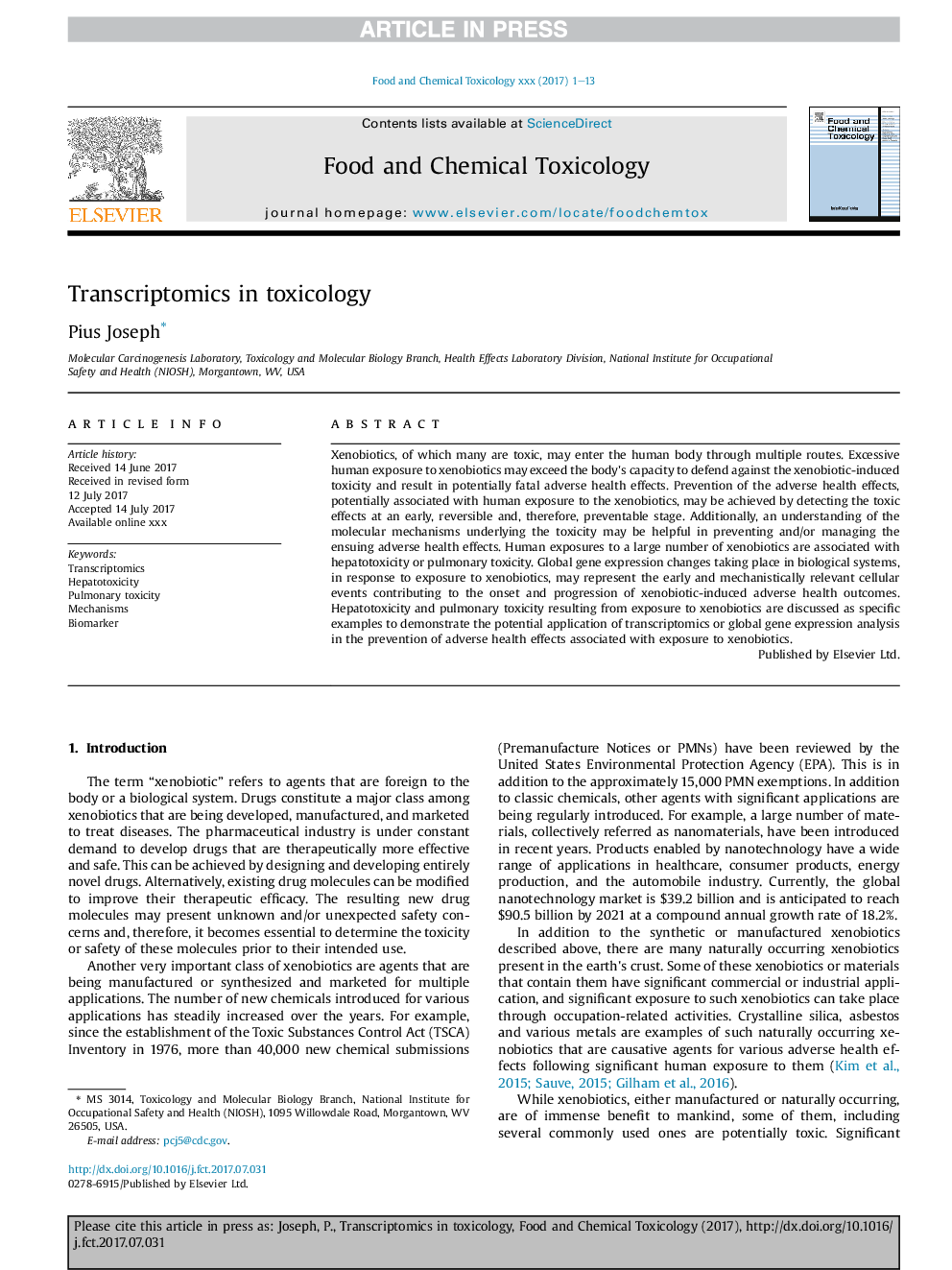| کد مقاله | کد نشریه | سال انتشار | مقاله انگلیسی | نسخه تمام متن |
|---|---|---|---|---|
| 10998187 | 1403305 | 2017 | 13 صفحه PDF | دانلود رایگان |
عنوان انگلیسی مقاله ISI
Transcriptomics in toxicology
ترجمه فارسی عنوان
ترانسکت نشینی در سم شناسی
دانلود مقاله + سفارش ترجمه
دانلود مقاله ISI انگلیسی
رایگان برای ایرانیان
کلمات کلیدی
متن ترانه سمیت کبد، سمیت ریوی، مکانیسم، بیومارکر،
موضوعات مرتبط
علوم زیستی و بیوفناوری
علوم کشاورزی و بیولوژیک
دانش تغذیه
چکیده انگلیسی
Xenobiotics, of which many are toxic, may enter the human body through multiple routes. Excessive human exposure to xenobiotics may exceed the body's capacity to defend against the xenobiotic-induced toxicity and result in potentially fatal adverse health effects. Prevention of the adverse health effects, potentially associated with human exposure to the xenobiotics, may be achieved by detecting the toxic effects at an early, reversible and, therefore, preventable stage. Additionally, an understanding of the molecular mechanisms underlying the toxicity may be helpful in preventing and/or managing the ensuing adverse health effects. Human exposures to a large number of xenobiotics are associated with hepatotoxicity or pulmonary toxicity. Global gene expression changes taking place in biological systems, in response to exposure to xenobiotics, may represent the early and mechanistically relevant cellular events contributing to the onset and progression of xenobiotic-induced adverse health outcomes. Hepatotoxicity and pulmonary toxicity resulting from exposure to xenobiotics are discussed as specific examples to demonstrate the potential application of transcriptomics or global gene expression analysis in the prevention of adverse health effects associated with exposure to xenobiotics.
ناشر
Database: Elsevier - ScienceDirect (ساینس دایرکت)
Journal: Food and Chemical Toxicology - Volume 109, Part 1, November 2017, Pages 650-662
Journal: Food and Chemical Toxicology - Volume 109, Part 1, November 2017, Pages 650-662
نویسندگان
Pius Joseph,
